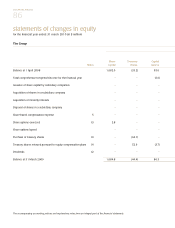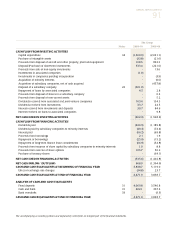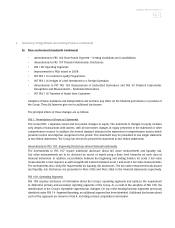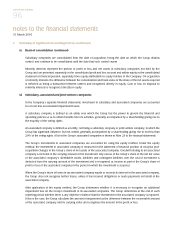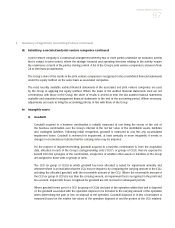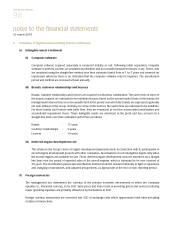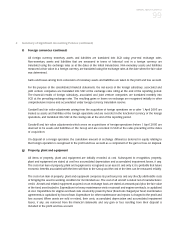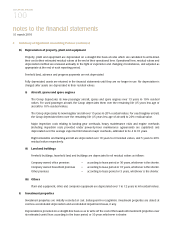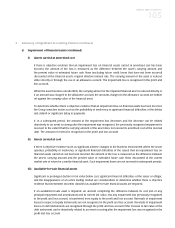Singapore Airlines 2010 Annual Report Download - page 98
Download and view the complete annual report
Please find page 98 of the 2010 Singapore Airlines annual report below. You can navigate through the pages in the report by either clicking on the pages listed below, or by using the keyword search tool below to find specific information within the annual report.SINGAPORE AIRLINES
96
2 Summary of Significant Accounting Policies (continued)
(c) Basis of consolidation (continued)
Subsidiary companies are consolidated from the date of acquisition, being the date on which the Group obtains
control, and continue to be consolidated until the date that such control ceases.
Minority interests represent the portion of profit or loss and net assets in subsidiary companies not held by the
Group and are presented separately in the consolidated profit and loss account and within equity in the consolidated
statement of financial position, separately from equity attributable to equity holders of the Company. On acquisition
of minority interests, the difference between the consideration and book value of the share of the net assets acquired
is reflected as being a transaction between owners and recognised directly in equity. Gain or loss on disposal to
minority interests is recognised directly in equity.
(d) Subsidiary, associated and joint venture companies
In the Company’s separate financial statements, investment in subsidiary and associated companies are accounted
for at cost less accumulated impairment losses.
A subsidiary company is defined as an entity over which the Group has the power to govern the financial and
operating policies so as to obtain benefits from its activities, generally accompanied by a shareholding giving rise to
the majority of the voting rights.
An associated company is defined as an entity, not being a subsidiary company or joint venture company, in which the
Group has significant influence, but not control, generally accompanied by a shareholding giving rise to not less than
20% of the voting rights. A list of the Group’s associated companies is shown in Note 23 to the financial statements.
The Group’s investments in associated companies are accounted for using the equity method. Under the equity
method, the investment in associated company is measured in the statement of financial position at cost plus post-
acquisition changes in the Group’s share of net assets of the associated company. Goodwill relating to an associated
company is included in the carrying amount of the investment. Any excess of the Group’s share of the net fair value
of the associated company’s identifiable assets, liabilities and contingent liabilities over the cost of investment is
deducted from the carrying amount of the investment and is recognised as income as part of the Group’s share of
profit or loss of the associated company in the period in which the investment is acquired.
When the Group’s share of losses in an associated company equals or exceeds its interest in the associated company,
the Group does not recognise further losses, unless it has incurred obligations or made payments on behalf of the
associated company.
After application of the equity method, the Group determines whether it is necessary to recognise an additional
impairment loss on the Group’s investment in its associated companies. The Group determines at the end of each
reporting period whether there is any objective evidence that the investment in the associated company is impaired.
If this is the case, the Group calculates the amount of impairment as the difference between the recoverable amount
of the associated company and its carrying value and recognises the amount in the profit or loss.
notes to the financial statements
31 March 2010


